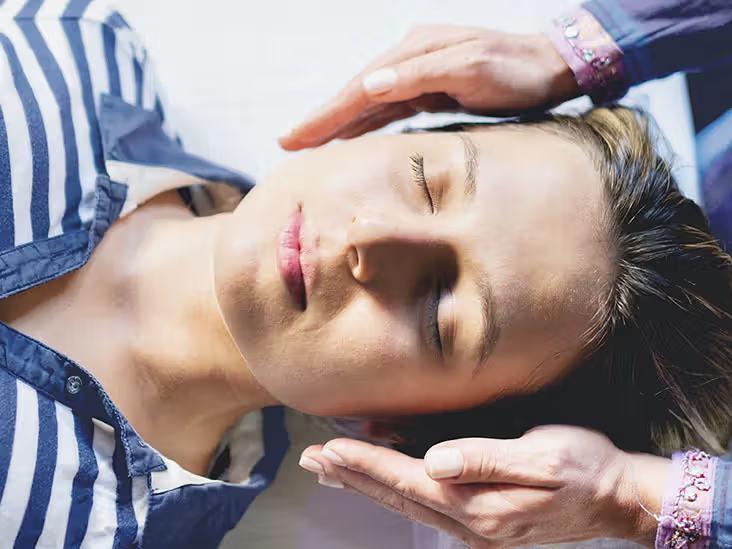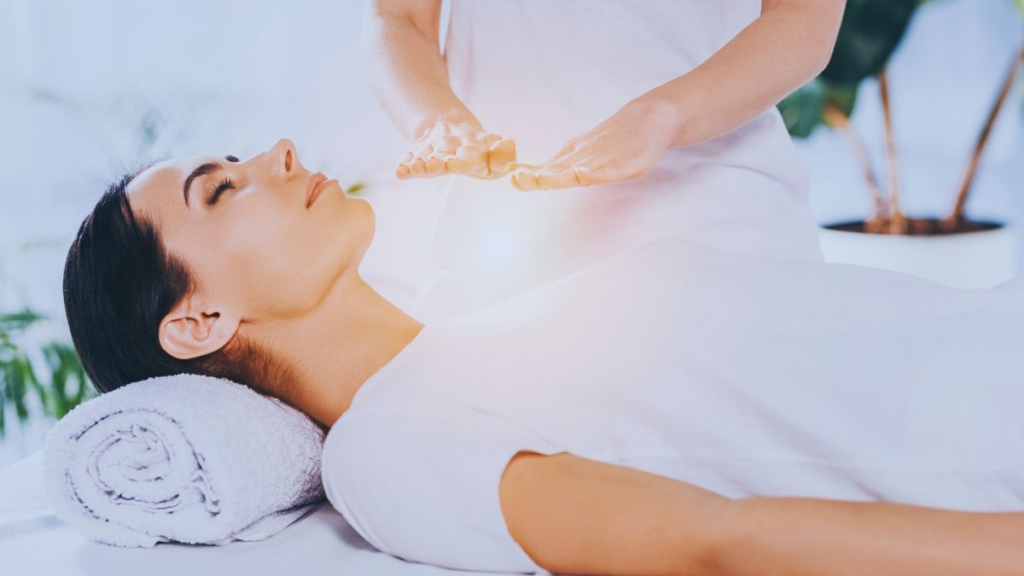
Reiki, a form of Japanese healing art, is known for its potential to bring relaxation and reduce stress to promote overall healing. If you are unsure about what happens in this procedure and what you should expect just go through the blog below. You will have a clear picture.
How To Get Ready for Your Reiki Session?
To prepare for a Reiki session, wear comfortable clothing, stay hydrated, relax, and maintain an open mind. Communicate any health concerns or goals with your practitioner.
Your practitioner will have prepared a serene and calm environment before your arrival.
Wear loose fitting clothes that are comfortable for you. You will be fully clothed throughout, so choose something that helps you relax easily. In addition, some practitioners may have a blanket ready in case there is need for extra warmth or comfort.
In most cases, when you reach your healing therapist, they will greet you and make sure that you feel comfortable. Know why exactly you have chosen such a type of therapy, ask about any concerns and give details on how it works.
This talk makes it easier for the facilitator to adapt the treatment accordingly to your needs.
What not to do before Reiki?
Before a Reiki session, avoid consuming heavy meals, alcohol, or caffeine. Refrain from intense physical activity and try to avoid high stress or emotional turmoil.
Do not eat heavy meals or drink too much alcohol before a Reiki session, as they can interfere with your ability to relax and gain the full benefits of the treatment. Also, clear your mind of other things that might be going on in your head, which could possibly be stressful during this period of time.
Take your time to be calm and avoid planning any back-to-back activities. To ensure that you have a good experience, wear clothes that allow you to move freely and tell the provider about anything else they should know in advance.
What Is Hands-On (or Hands-Off) Treatment?
In Reiki, hands-on treatment involves the practitioner placing their hands lightly on the recipient’s body, while hands-off treatment involves hovering or holding hands near the body without physical contact.
When starting out, your practitioner often scans your body’s energy field using their hands. By doing this touchless evaluation, they can easily locate areas that need more attention.
During most of the session, the therapist places his palms lightly on top of different parts of your body or hovers them above it. These frequently include, the topmost part of one’s head, face and throat region, upper chest and shoulder blade area, abdomen and lower limbs, including feet.
Each position is normally held for 3-5 minutes, but this could vary depending on the healer’s intuition and what you require.
How Do You Feel During Sessions?

During Reiki sessions, people often feel deeply relaxed, may experience a sense of warmth or tingling, and might have emotional releases or a heightened sense of well-being.
While reiki energy is flowing through you, there are various sensations that can
Some feel a sensation of heat or tingling in the area through which the professional is channeling their healing energy. Some experience emotional release too.
It should be remembered that each person goes through their own unique experiences. Some people experience strong sensations while others do not feel much.
What Are Distant Healing Techniques?
Distant healing techniques in Reiki involve sending healing energy to someone who is not physically present, using intention and energy transmission through mental focus and visualization.
Sometimes, a Reiki master may perform the procedure without physically touching you, especially if you do not like touch. The hands-off technique works as well because reiki is an energy that can be sent through distances.
As a session ends, most practitioners usually help you in grounding yourself, smooth out your aura gently and ndicate softly that the treatment has ended.
You’ll have some time to come back to full waking consciousness slowly and then sit up whenever you feel like it.
Can Reiki be harmful?
Reiki is generally considered safe, but it may cause temporary emotional discomfort or physical reactions in some individuals. It should not replace conventional medical treatments for serious conditions.
The general belief is that this procedure does not pose any threat to one’s safety or privacy and many people only get to feel calmness and relaxation afterwards. Nonetheless, there are some cases wherein a patient may develop transient physical discomforts such as fatigue, mild headaches, or emotional outbursts.
These signs of healing are essential indicators of energy imbalances being worked out.
What Happens After Your Reiki Session?
After a Reiki session, you may feel relaxed, refreshed, or emotionally unsettled. It’s important to drink water, rest, and reflect on any sensations or changes experienced.
Physical & Emotional Effects include improved quality of sleep. reduced pain or tension. more focus or energetic feeling, emotional release or insights and sense of peacefulness and well-being.
For some individuals, as they start healing and their bodies find balance again, these symptoms may temporarily increase before they improve.
Do you tip a Reiki healer?
Tipping a Reiki healer is not typically expected but can be appreciated. Follow local customs or the healer’s policy regarding gratuities, if applicable.
Generally speaking, tipping is done in accordance with local customs and what feels right to an individual client. In some cultures, it is customary to tip Reiki healers while in others it is not common for clients receiving alternative therapies to leave tips.
An inquiry concerning tipping expectations should be made from either the healer personally or from within their establishment so as to get accurate advice on how much money to give them.
Do I need to get out of my clothes when doing Reiki?

No, you do not need to remove your clothes for Reiki. Wear comfortable, loose-fitting clothing to allow for relaxation and ease during the session.
No, removing your clothes is not a requirement for Reiki. Usually, it is necessary for the recipient to be dressed fully during the process. The Reiki healer may place their hands gently on or over certain parts of your body to direct energy. It is advisable that you put on comfortable and loose fitting attire which can help in relaxing you during the session.
What do Reiki healers charge?
Reiki healers typically charge between $50 and $150 per session, depending on location, experience, and session length. Prices can vary widely based on individual practitioners.
The price of a Reiki session varies considerably depending upon location, experience practitioner’s experience and length of the session. Normally, fees range between $50 and $150 per hour for sessions.
Some healers provide discounts. It would be prudent to look for and research local practitioners who have reviews and introductory sessions before committing to a high-priced Reiki Session.
How frequently should Reiki be done?
Reiki frequency depends on individual needs and goals. Sessions can range from weekly to monthly, with some opting for occasional treatments as needed for balance and well-being.
Once a month might be enough for general health purposes and stress reduction. However, if you have specific health problems or emotional difficulties or major changes happening in your life then weekly or biweekly sessions might be more appropriate. A personalized plan can be developed by your reiki master according to your own situation.
Conclusion
A reiki session provides an opportunity to get back in touch with oneself again. Although experiences will differ from person to person, many people find this practice a profound healing experience. By knowing what to expect, you approach your reiki session with openness and trust.

